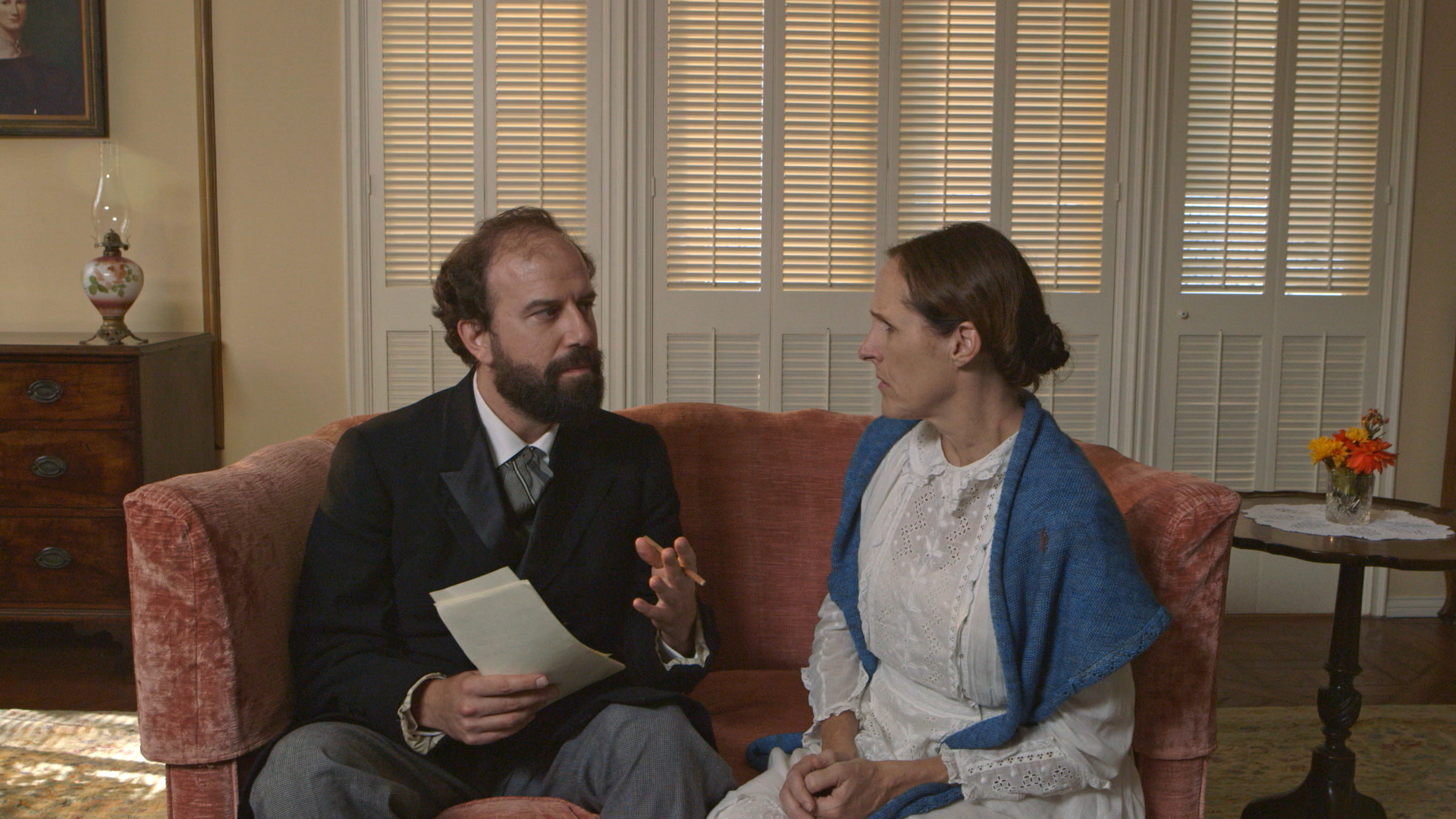Review by Zach Dennis
The purveyors of history are the ones who are victorious – or those who just, by chance, got there first.
Those credentials don’t necessarily win our undying faith, but most of the time our patience for investigation – or just interest in nuance – is lost or rejected. So we are left with history — what should be a written, undeniable record — in the hands of society’s gatekeepers, who have been dominantly white and male.
So what’s left for women?
The tale of Emily Dickinson’s long-term affair with her childhood friend turned sister-in-law, Susan, could be seen as near fan-fiction-like conspiracy rivaling the Satanic messages found by playing a Beatles record backwards, but that dismisses an unexplored avenue of a known figure that we know little about.
Wild Nights with Emily is firmly aware of any suspicions you might have about the alleged affair — if not outright mocking the concept at time. In this sense, it isn’t making light of the two women having a romantic entanglement, but moreso the ways in which we try to theorize out of thin air.
Dickinson (played by Molly Shannon) in this version is less a near mute recluse, and more of a muted shut-in — not designing her life to stay outside but finding outside, and its inhabitants, to be unnecessary for her spiritual enjoyment. Who needs cocktail parties, church and revelry when you have a piano-scored writing space and a loving (albiet occasional) partner next door.
As the movie — adapted from the play by Madeleine Olnek, who also directs — unravels and we begin to learn more of Dickinson’s quests to become published, the movie asks less of us to feel consumed in this 19th century veneer and more to use our 21st century knowledge to assess the difficulties posed for a female poet.
As Dickinson begins to accumulate a repertoire of poems, she earns a visit by the literary review editor Thomas Wentworth Higginson (Brett Gelman), who immediately becomes overwhelmed with the assault of questions socketed in Dickinson’s mind and firing from her lips as he enters the room. The scene can be played for a bit of a laugh — the unknowing Higginson enters a room and is confronted by questions from his host that he has no time to answer.
But the scene develops, and we learn that Higginson’s reticence at the beginning could be less of his shock and more of an insistence for the “young” (in terms of how he qualifies experience) poet to fall in line and listen to someone who knows, not only more, but better.
Our 21st century minds can easily key into the perfect example of “mansplaining” — something that could be seen as cringeworthy and speaking to a modern audience if not for the understated perfection of Shannon’s performance in the scene — offering veiled annoyance to his sermon and “surgery” of her writing before leading him out kindly.
This tactic is felt again later in the movie when the traveling Ralph Waldo Emerson (Robert McCaskill) is gracing Susan’s home with tales of his work, yet is nearly incomprehensible under his murmuring.
It’s not a spoiler to point out that Dickinson meets a premature demise due to illness, and after this is when the world began to more emphatically embrace her writing. The harbinger of this is Mabel Todd (Amy Seimetz), a middle-aged divorcee who feels a personal connection to the poet even if she has never shared a face-to-face encounter despite their request close proximity.
This opens up a new case in the re-examination of history — that of the glory seeker further their own ambitions on the backs of those who put in the work. Mabel is nothing but sly about her desires to get closer to the poet — even taking part in an affair with her brother, Austin (Kevin Seal), who is married to Susan.
As Mabel recounts her interactions, and the tales that have been regaled to her about Emily, it is easy to see the distinction between the recorded word and the telephonic passing down of stories that slowly lose their truth. Is the history “true” just because this person has the official recollection of this famed (not to mention best-selling) figure while the truth could be out there and unexamined?
Olnek poses this question with a brief sequence of Susan’s daughter Mattie discussing her own book, which details the more intimate affair between her mother and her aunt Emily to a listening public of three, quick-to-leave attendees.
Wild Nights with Emily never outright makes the assertion that this relationship was the stone-chiseled truth. While it presents evidence to the claim, the bigger exploration it poses to the audience is our outright acceptance to what we perceive as historical text. Can we trust the sources as much then as we can today? And what is being left out?
Emily Dickinson is frequently seen as a reclusive, anti-social hermit, toiling away in her room writing poetry nobody would read. Some of that may be true, but a lack of voices — those not normally allowed to hold court in the same room — should tell us that history can too be re-examined and the lines between truth and fiction may not be as blurred as they would once appear.


